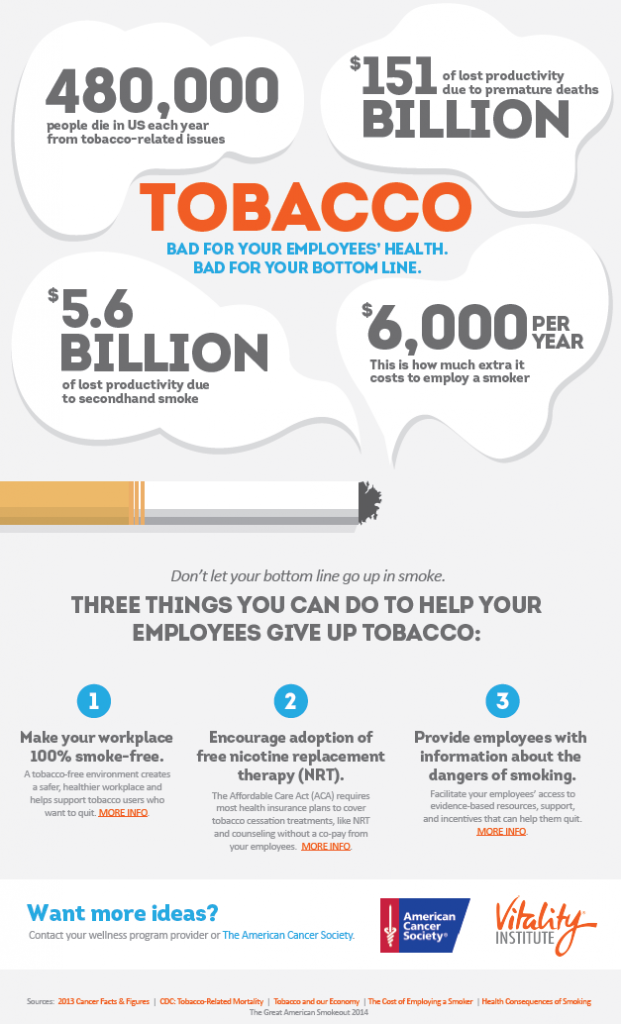Today, smokers nationwide took part in the American Cancer Society Great American Smokeout, an annual event challenging people to stop using tobacco and providing advice on the range of support tools available. Since the 1970s, this event encourages smokers to quit smoking on the day or make a plan to quit in the future.
Overall, smoking rates have declined from 20.9% of the adult population in 2005 to 18.1% in 2012. Progress has varied between states. New Yorks tobacco control program has yielded impressive results: a 13% decline in the prevalence of adult smokers between 2003 and 2011, and a 53% decline among high school students from 2000 to 2011. However, rates remain too high. An estimated 42.1 million Americans still smoke.
More than 16 million Americans suffer from a disease caused by smoking. Tobacco use leads to cancer, heart disease, stroke and lung diseases (e.g. emphysema and bronchitis). People who smoke are six times more likely to suffer a heart attack than those who do not. Cigarette smoking remains the leading cause of preventable death in the US, accounting for more than 480,000 deaths each year. Smokers have a life expectancy 10+ years shorter than non-smokers.
Around 70% of smokers express a desire to quit; 50% attempt to do so each year. Research shows that smokers who engage in support measures nicotine replacement therapy, counseling and smoking cessation hotlines have greater success. Innovations such as those involving nicotine delivery devices offer new opportunities to support tobacco cessation in a growing market. The electronic cigarette market is estimated at $5 billion globally and $2.5 billion in the US. Research shows that smokers who used e-cigarettes daily for at least one month were six times more likely to quit smoking than those who rarely used them, and the Royal College of Physicians, believing e-cigarettes could lead to significant reductions in smoking rates, calls for further research to determine how best to ensure their use is safe and effective. In the meantime, those concerned with nicotine delivery devices should consider that while nicotine can cause dependence, tobacco is responsible for the majority of adverse health effects.
Tobacco cessation must remain a key focus to improve the health of millions of Americans and address the ensuing effects on the workplace. Lost annual productivity due to premature deaths from smoking is estimated to cost $151 billion but employers can take action today by making the workplace 100% smoke-free, encouraging adoption of free nicotine replacement therapy and providing employees with information about the dangers of smoking.
Find out more stats through our infographic (also depicted below) and let us know what worked for you to quit as a comment below or on social media by tagging @VitalityInst.

Thumbnail image source: http://healthsolutionsarizona.com/current-events/smoking-cessation/







